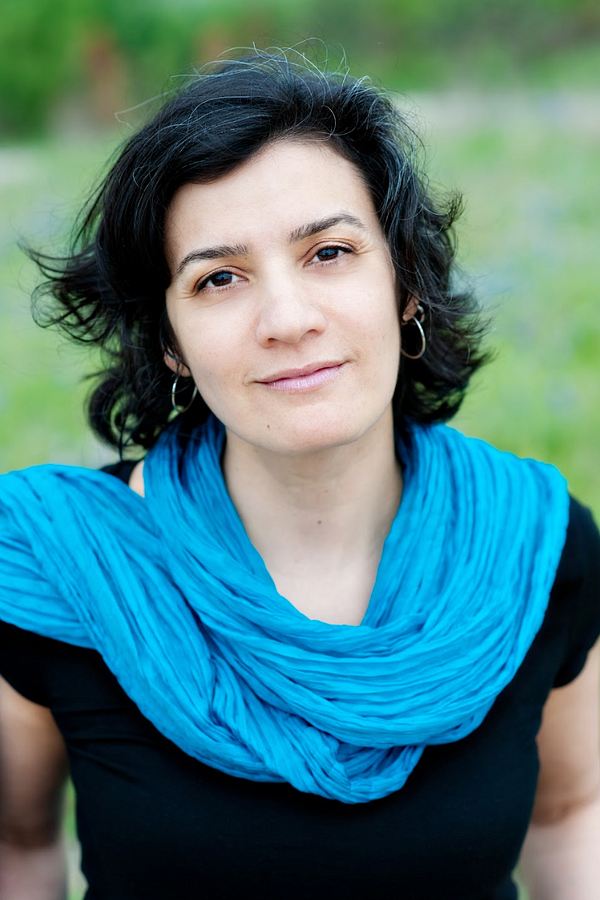Science journalists who cover climate change face many challenges. From the competition with social media to reader skepticism, there is an immense pressure on journalists to produce content at a much faster pace, while keeping high quality standards. We have asked two journalists what it’s like to work in the field today and what shapes the debate around climate change.
Daisy Dunne is a science writer for Carbon Brief, a UK-based website covering climate science and policy. She holds a BSc in biology from the University of Bristol and a science journalism MA from City, University of London. On the other side of the Atlantic Ocean, Meera Subramanian is an award-winning journalist, former MIT Knight Science Journalism Fellow, and the author of A River Runs Again: India’s Natural World in Crisis. She is currently working on Finding Middle Ground, a series exploring perceptions of climate change for InsideClimate News.
How did you become a science journalist? Tell us about your journey.

Daisy Dunne.
Daisy Dunne: Unlike most science journalists, I knew from a young age that I wanted to have a career writing about science. I first studied for a degree in biology at the University of Bristol and then I was lucky enough to receive a scholarship to study for a Master’s in science journalism at City, University of London. Alongside my studies, I regularly took on unpaid work and internships to gain experience, which was, at times, a challenge financially. After leaving university, I won a place on a competitive graduate scheme with the MailOnline in the UK. The scheme allowed me to work in newsrooms in both Wales and London and taught me the ropes of news reporting, which I still rely on today in my position as science writer at Carbon Brief.

Meera Subramanian.
Meera Subramanian: You have to be curious to do this job! You need the trait for both the science part and the journalist part. I always had an interest in the natural world, but pursued the humanities in college and then went to work with environmental non-profits throughout my twenties. That’s where I started to become scientifically literate — by working on the land, growing my own food, learning Latin botanical names and soil science and forest ecology. In my early thirties, I carried that interest into journalism, somehow getting into NYU’s graduate journalism program with writing samples from the zine Rrrrl Grrrlz that my girlfriends and I were publishing in the wee-hours, fueled by wine. I remain most interested in the intersection between humans and the natural world they inhabit, where culture and science dance and sometimes collide.
What would you say are the main challenges of covering climate change and climate science today?
Daisy Dunne: One of the most important things to bear in mind when covering climate change is accuracy. Making even a small mistake could be quickly misinterpreted by some as an attempt to deliberately mislead the public. Another important challenge is communicating new climate research in a way that is understandable, relatable and entertaining to a general reader. Climate change is a fascinating and relevant topic but many crucial areas of climate science, such as climate sensitivity and extreme weather attribution, can be difficult to understand for most people.
Meera Subramanian: The single biggest challenge for me is that the political polarisation that’s swept over the country has led to a deep skepticism about science on the right — at least climate science, not the science that makes cars safe or your socks no longer get sweaty. Because of political ideology, the tedious, never-ending pursuit of understanding that defines scientific inquiry is questioned by many people. Or, conversely, ordinary people feel like it’s so far out of their realm of experience that they throw up their hands and refuse to think about it one way or the other. The reality is that people, and their beliefs and concerns, can be much more nuanced than the binary red and blue divide leads us to believe.
How do you overcome these challenges?
Daisy Dunne: At Carbon Brief, our biggest priority is ensuring that all of our coverage is accurate and based on facts rather than conjecture. To do this, we regularly conduct our own analysis of new research and also draw from the expertise of climate scientists. To try to make my articles as understandable as possible, I tend to write in a way that is simple, clear and to the point. I try to avoid using flowery language or complicated metaphors because I feel this can sometimes make things more confusing for the reader. Another way we try to make our content digestible is by using infographics and multimedia.
Meera Subramanian: That curiosity I mentioned earlier? Couple that with compassion. Humans are both complex and simple creatures. We’re all driven by elemental needs, but our passions vary wildly, and I never cease to be delighted and surprised by the people I meet and the eclectic interests they have. So while I dig deep into the science of stories — whether understanding how chill hours affect peach production or the impact of black carbon on human health or the atmosphere — I try to be a really good listener when I go out in the field and talk with people, to understand not only what they believe but why they believe it. I listen to their stories, and then use the scientific knowledge I’ve learned combined with the strong narrative gathered while reporting to share those stories.
According to you, what shapes the debate around climate change today?
Daisy Dunne: I don’t think there is a debate around climate change. Our understanding of climate change is informed by a clear and overwhelming scientific consensus. The vast majority of scientists are certain that humans are causing climate change and that immediate action to address this is needed now.
Meera Subramanian: Too much all-or-nothing, on both sides, and nuggets of information buried under an avalanche of misinformation and eternal distraction. With the issue of climate change, the stakes are tremendous and more long-term than we can even comprehend, but no humans take kindly to other humans screaming at them. And with most of us sitting in our social media silos, demonising your opponent has never been easier, the screams strengthening and exacerbated by powerful behind-the-scenes interests. I imagine I’m like many Americans when I yearn for a wee bit more civility. But like I said, the stakes are high. It can be tough.
How difficult is it to translate scientific research into an article that’s accessible by the greater number? And why is it so important?
Daisy Dunne: I think writing about scientific research in a way that is understandable for everyone is one of the key tasks of a science journalist. An important way of doing this is to never assume that the reader will understand complicated scientific language and concepts. When I write an article, I try to picture in my mind the sort of person that might read it and what their level of understanding is likely to be.
Meera Subramanian: I don’t think it has to be that hard. Over-research any topic, so your own knowledge is solid, and whenever you have questions, find the people who can help you answer them. This is the great thing about being a journalist — you can call up anyone and ask to speak with them! Read the peer-reviewed literature, track down the authors and the people who disagree with them, and always finish every interview by asking who else you should be talking to. Then, corner your friends, your family, and your seven-year-old niece, and see if you can explain what you’re working on. Write to make a scientist not squirm and an average person sit still, pause over their coffee, and keep reading.
Interview by Anne-Sophie Garrigou.
This article was published in The Beam #6




